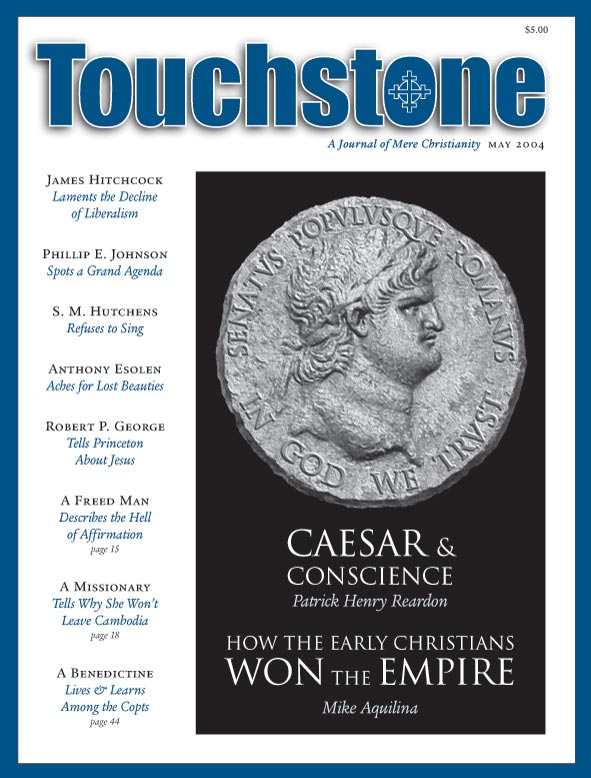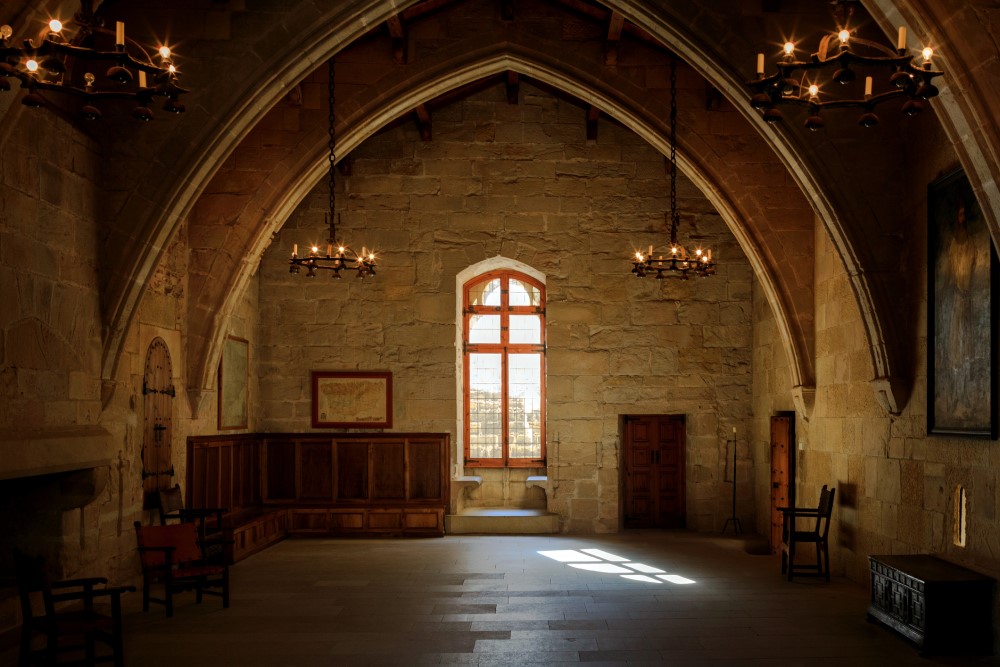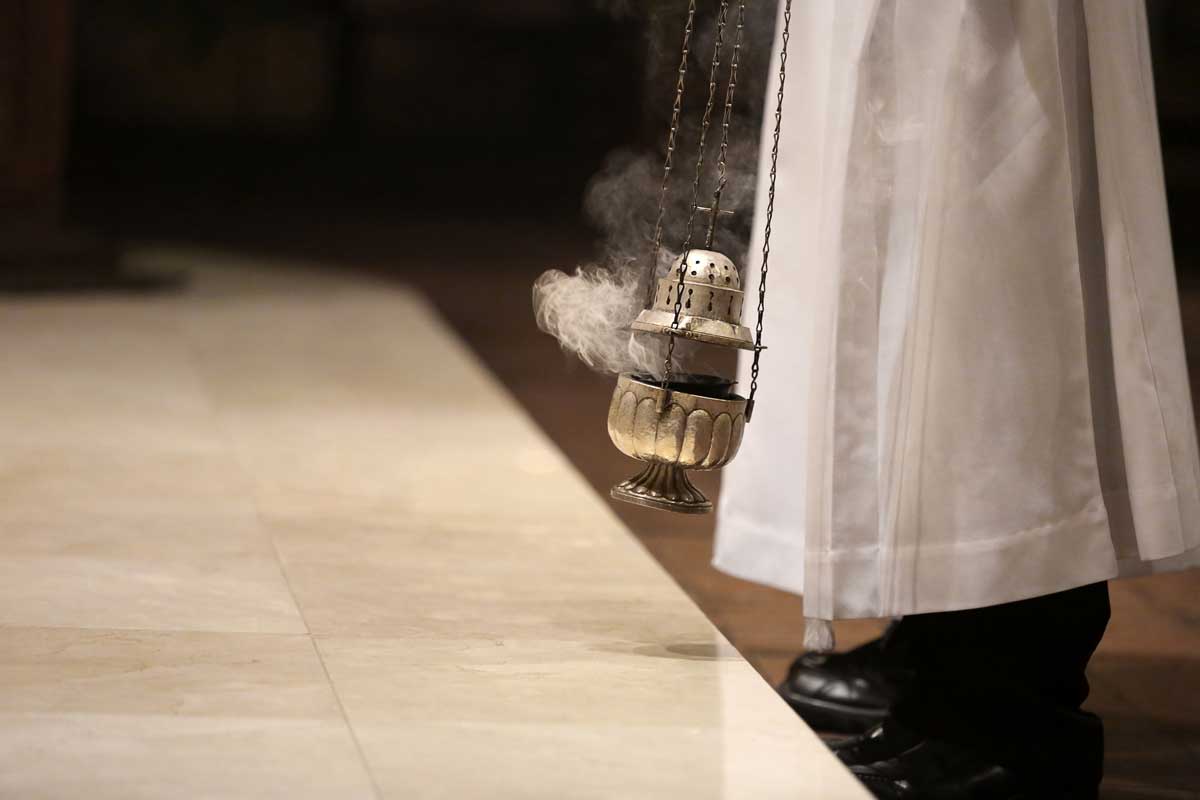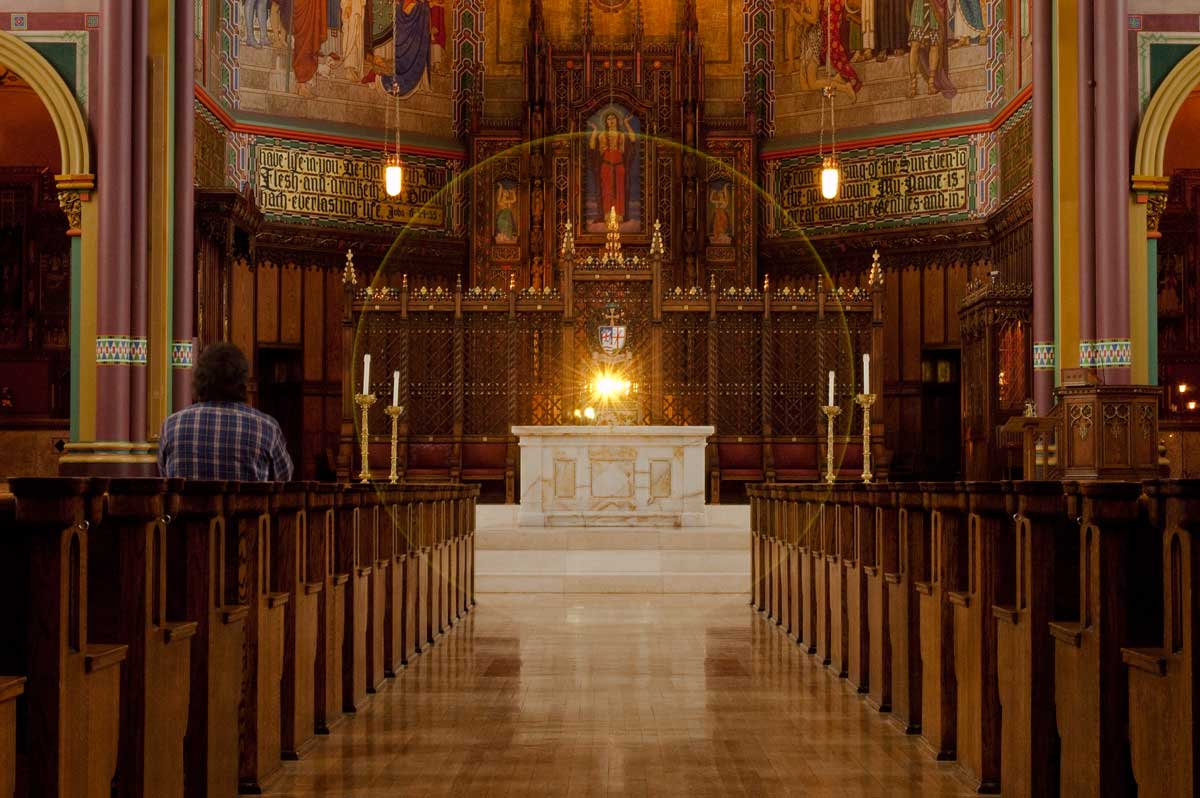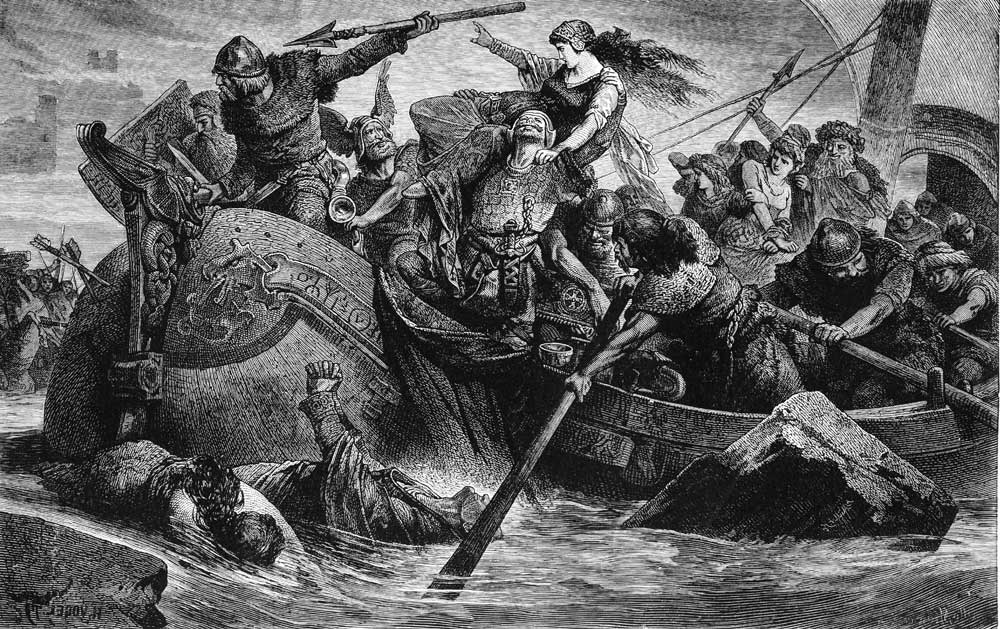Disunion of Utrecht
Old Catholics Fall Out over New Doctrines
by Laurence J. Orzell
At their November 2003 meeting in Prague, the Old Catholic International Bishops’ Conference (IBC) narrowly approved a resolution that effectively expelled the U.S.-based Polish National Catholic Church (PNCC) from the Old Catholic Union of Utrecht, for being, in effect, too traditional. A press statement issued after the meeting announced that a “separation” of the churches had occurred because the PNCC had refused “to maintain communion with those Churches of the Union of Utrecht, which have introduced the ordination of women”—i.e., those of Austria, Germany, the Netherlands, and Switzerland.
Though the principal cause of the split was the admission of women to the ministerial priesthood by several of the Old Catholic churches, the decision reflected longstanding tensions between the “progressive” majority and the PNCC over other issues, such as homosexuality and ecumenism.
The Union of Utrecht, formed in 1889, brought together the Church of Utrecht, which had split from Rome in the eighteenth century during the Jansenist controversy, and the Old Catholics of Central Europe, who refused to accept the decisions of Vatican I. By 2003, it included churches in Austria, the Czech Republic, Germany, the Netherlands, North America, Poland, Slovakia, and Switzerland. Minuscule Old Catholic communities also exist elsewhere in Europe. The Union claims to maintain the faith of the Undivided Church, but in recent years its West European members have enthusiastically embraced innovations that have no foundation in the early Church, such as women priests and the approval of homosexual conduct.
The PNCC emerged in the United States and Canada during the late nineteenth century among Polish immigrants who sought to preserve their native language and culture. Their leader, Fr. Franciszek Hodur, unsuccessfully petitioned the Vatican for concessions in these areas but was excommunicated by his bishop in 1898, and then organized the PNCC. The Polish church joined the Utrecht Union in 1907 when Fr. Hodur was consecrated bishop by the Dutch Old Catholics.
By the mid-1970s, when its original foundational principles had become less compelling, the PNCC increasingly focused upon traditional Old Catholic beliefs as the basis for its self-identity. At the very same time, however, the West Europeans had begun to modify those beliefs.
Flawed Communion
In 1976 the IBC, which ostensibly exercises authority in questions of faith and morals, issued a Declaration opposing the admission of women to the diaconate, presbyterate, and episcopate, but a campaign to overturn that policy soon began within the West European churches.
This effort partially succeeded in 1997, when the IBC essentially agreed to disagree. On the one hand, the bishops recognized that some churches would proceed with the ordination of women, although they did not—contrary to press reporting both at the time and afterwards—authorize them to do so. But on the other hand, the IBC acknowledged that this would lead to a break in communion and committed itself to reach a final decision on the existing “situation” no later than 2003.
The precise nature of any decision or solution remained undefined. The PNCC, for its part, refused to repudiate the 1976 Declaration and indicated that any attempt to admit women to the ministerial priesthood would lead to a break in full communion with churches that adopted the practice.
Rather than withdraw from the Old Catholic Communion, however, the PNCC chose to redefine its relationship with such churches as one of “a very real, although imperfect, communion.” The reasons for this are varied, and included a desire to avoid being thought to be isolated within the wider Christian community, a rather sentimental attachment to Old Catholic history, and a belief that continued membership in the Utrecht Union perhaps could save the storm-tossed ship from sinking or, at least, delay its descent. Then, too, the PNCC’s leadership held that the onus for any decision on its membership rested with the proponents of change, not those who saw themselves as upholders of classic Old Catholicism.
The PNCC’s policy on imperfect communion, embodied in a set of Guidelines adopted by its General Synod in 1998, placed several restrictions on intercommunion with West European Old Catholics. For example, the church’s priests and bishops could no longer concelebrate the Eucharist with any clergy from those Old Catholic churches that had ordained women. Moreover, the PNCC’s bishops would no longer take part in the consecrations of West European bishops, and the latter were not allowed to participate in the consecrations of Polish National Catholic bishops.
Notably, the IBC initially welcomed the Guidelines. Indeed, the IBC’s revised Statute (2001) acknowledged the fact that full communion no longer existed within the Union. But this apparent complaisance was deceptive. West European Old Catholic leaders, many of whom are disaffected, radical ex-Roman Catholics who have come under liberal Anglican influence as a result of their full communion with the Church of England under the terms of the Bonn Agreement (1931), actually hoped that the PNCC eventually would succumb to modernism or at least mitigate its policy to such a degree that they could plausibly maintain that full communion had been restored.
The Homosexual Factor
But this the PNCC stubbornly refused to do. Its leadership maintained that a restoration of full communion would implicitly constitute an acceptance of female clergy. This attitude became more entrenched as the West Europeans, far from seeking to reassure the PNCC that its traditional views were respected, began to insist on pursuing other innovations without even a semblance of consultation.
Not surprisingly, the most significant of these was an effort to recognize homosexual conduct as morally good and to bless homosexual unions. Despite the fact that the IBC had neither discussed nor approved this radical break with Christian morality, the Austrian Old Catholic Church approved the practice in 1998.
Since that time, pro-homosexual Old Catholic groups have called upon authorities in other West European churches to follow suit. In 2001 the International Old Catholic Theologians’ Conference, a West European-dominated body, declared that “homosexual partnerships” can “express love and faithfulness between human beings, and experience God’s blessing.” Moreover, the church should introduce “the blessing of such partnerships” and consider whether the “liturgical form” for the latter “should be viewed as a sacrament.”
The PNCC flatly rejected this view. In 2002 its General Synod described homosexual practice as sinful and deplored the blessing of homosexual relationships. However, attempts by its bishops to discuss the issue at any length during meetings of the IBC met with little success.
Old Catholic ecumenical strategy represented another point of contention. The PNCC terminated its intercommunion with the Episcopal Church in 1978, after the latter introduced the ordination of women priests. The West Europeans, for their part, have maintained extremely close ties to Anglicans, and this has hampered the development of any ongoing international Old Catholic dialogue with the Roman Catholic and Orthodox Churches. Moreover, German Old Catholics have entered into an intercommunion agreement with Lutherans, and all West European Old Catholic churches now follow the practice of open communion.
West European Old Catholic representatives also attend, as observers, meetings of the Porvoo Communion, a group of several Anglican and North European Lutheran churches that believe they have preserved a “historic succession of bishops.” It is likely that the IBC will establish a formal relationship with either the Porvoo group as a whole or with individual Lutheran member churches (e.g., Sweden).
The PNCC, whose dialogue with the Roman Catholic Church resulted in an arrangement on limited inter-communion (1996), does not support sacramental sharing with ecclesial communities that do not stand in the Apostolic Succession.
Sleight of Hand
In theory, however, the situation of imperfect communion could have continued indefinitely. The PNCC did not demand that its sister churches revise any of their policies or practices that had led to the rupture of full communion. Prime Bishop Robert M. Nemkovich, who led the church’s delegation at the IBC’s meeting, presented a Statement on behalf of its hierarchy that reaffirmed its position on continued membership, despite what he termed “new and serious difficulties” in the areas of morality and ecumenism.
Though he ruled out any immediate restoration of full communion, he called for mutual respect and consideration of ways to improve relations. Implicit in the Statement was the message that responsibility for the PNCC’s future within the Utrecht Union rested in the hands of the other Old Catholic bishops.
The West European response at Prague revealed a good deal about the nature of contemporary Old Catholicism. In various ways, the bishops from Austria, Germany, the Netherlands, and Switzerland made it clear that while they did not require the PNCC to adopt the ordination of women, the blessing of homosexual partnerships, or the practice of intercommunion with Protestants, they did expect it to lift virtually all restrictions on sacramental sharing with those who had done so.
Joris Vercammen, the Old Catholic Archbishop of Utrecht and IBC President, implausibly argued that the PNCC could and should restore full communion even though it did not recognize Old Catholic female clergy. In other words, the touchstone of what it meant to be “Old Catholic” was to be in full communion rather than to share the same beliefs in faith, order, and morals. The PNCC’s representatives remained adamant that they could not endorse a restoration of full communion, for this would imply an acceptance of West European innovations.
The West Europeans thereupon resorted to a sleight of hand in order to break the impasse and to rid themselves of their conservative colleagues. According to the IBC’s Statute, the only offenses for which a bishop and, by extension, his church can be excluded from the Utrecht Union are serious errors in faith or morals or violations of the Statute itself. In light of their own conduct, the West Europeans realized that they would look ridiculous if they invoked one or more of these. Instead, they falsely claimed that the IBC’s 1997 decision required a restoration of full communion by 2003. Because the PNCC refused to do so, they argued, it had created a “separation.”
When put to a vote, this position was adopted by a vote of six to four, with one abstention. Ironically, but perhaps providentially, one of the affirmative votes came from a PNCC bishop, not because he shared its presuppositions but because he had long opposed continued membership in the Union. Immediately after the vote, the PNCC delegation withdrew from the conference, and the West Europeans made no effort to encourage its return.
The post-IBC press statement rather coyly claimed that the “effect” of the decision “will need to be considered over the next few months.” Moreover, it falsely averred that the PNCC had refused any form of communion with its sister churches.
The Divorce
Prime Bishop Nemkovich did not require much time to conclude that the term “separation” actually meant “divorce.” In an open letter to all PNCC clergy and laity he pointed out that “contrary to the provisions of the IBC’s ‘Statute’ . . . a majority decided . . . to remove the PNCC from the Union of Utrecht.” While expressing regret, he reminded the faithful that “recent innovations adopted by the West European churches have altered the character of the Utrecht Union to such an extent that it is no longer the same communion that Bishop Franciszek Hodur joined as a result of his consecration in 1907.”
“Progressive” Old Catholics would doubtless concur with the latter assessment. With the departure of the PNCC from the Union of Utrecht, the latter is now an exclusively European body, and even that has experienced an embarrassing defection since the IBC’s meeting in Prague. The bishop-elect of the Slovak church, Fr. Augustin Bacinsky, broke with the Union in early 2004 after openly expressing disaffection with the modernist direction of the West Europeans. He subsequently obtained consecration from episcopi vagantes (wandering bishops attached to no particular church) in Portugal and was expelled from the IBC.
For more information on the Old Catholic movement, see C. B. Moss, The Old Catholic Movement (1964) and Gordon Huelin, ed., Old Catholics and Anglicans, 1931–1981 (1983). The website of the Swiss Old Catholic Church contains much useful information (in German) from a contemporary West European perspective.
Laurence J. Orzell is the secretary of the doctrine commission of the Polish National Catholic Church and has served as an advisor to the PNCC?s bishops at recent meetings of the Old Catholic International Bishops? Conference. He lives in Norfolk, Virginia.
bulk subscriptions
Order Touchstone subscriptions in bulk and save $10 per sub! Each subscription includes 6 issues of Touchstone plus full online access to touchstonemag.com—including archives, videos, and pdf downloads of recent issues for only $29.95 each! Great for churches or study groups.
Transactions will be processed on a secure server.
more on Catholic from the online archives
more from the online archives
calling all readers
Please Donate
"There are magazines worth reading but few worth saving . . . Touchstone is just such a magazine."
—Alice von Hildebrand
"Here we do not concede one square millimeter of territory to falsehood, folly, contemporary sentimentality, or fashion. We speak the truth, and let God be our judge. . . . Touchstone is the one committedly Christian conservative journal."
—Anthony Esolen, Touchstone senior editor




